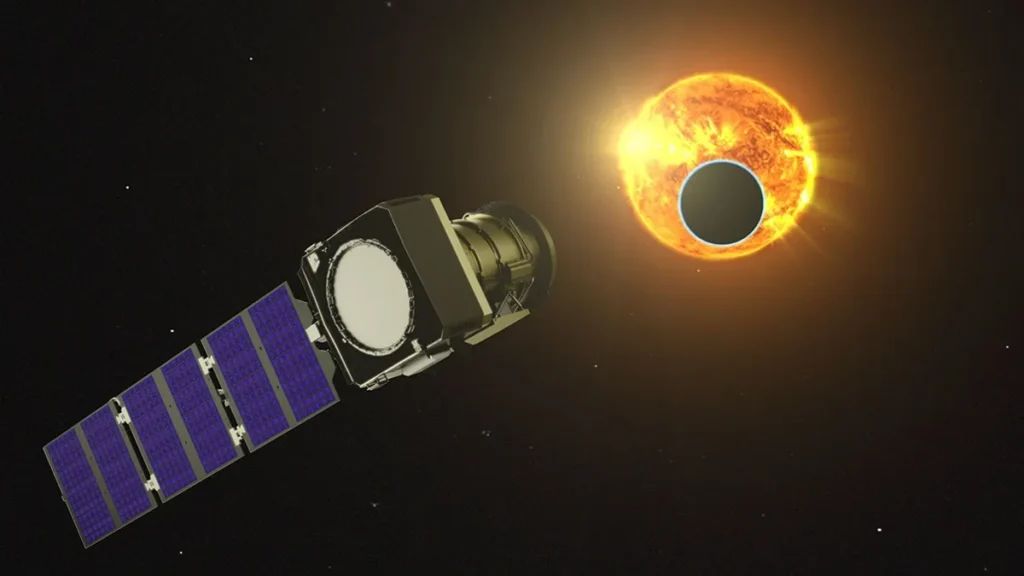
Introduction
The vast universe beyond our solar system is teeming with exoplanets, some of which might harbor the right conditions for life. The James Webb Space Telescope (JWST) has already revolutionized our understanding of space by capturing stunning images and invaluable infrared data. However, its availability is limited, and the demand for observation time is overwhelming. To address this challenge, NASA is set to launch a new mission: Pandora.
Pandora, a small yet vital satellite, is designed to complement JWST’s research by focusing on exoplanet atmospheres. Scheduled for launch in late 2025, this mission will play a crucial role in the study of distant worlds. By analyzing atmospheric compositions, Pandora aims to determine whether these planets possess key habitability markers such as water, clouds, and haze. In this blog, we explore everything you need to know about NASA’s Pandora mission and its significance in exoplanet research.
The Need for Pandora
While the James Webb Space Telescope has been groundbreaking, it faces several challenges in exoplanet research. One of the biggest issues is stellar light interference, which makes it difficult to accurately analyze planetary atmospheres. JWST’s time is also limited, meaning that only a select number of exoplanets can be studied in depth.
Pandora is designed to address these limitations. Unlike JWST, which has to divide its time between various cosmic phenomena, Pandora will dedicate itself solely to exoplanetary atmospheres. Its ability to observe for extended periods allows for a more comprehensive understanding of atmospheric conditions. This prolonged observation capability makes Pandora a critical asset for refining future JWST studies and advancing our knowledge of exoplanet habitability.
How Pandora Works
Pandora will focus on 20 exoplanets, tracking their atmospheres over time. By observing these exoplanets multiple times over a year, it will gather in-depth data about their compositions. Each observation session will last for 24 hours, ensuring that researchers receive precise and consistent data.
The satellite’s primary function is to separate planetary signals from stellar variations. It will measure both the brightness of host stars and the transits of exoplanets across them. This technique will allow scientists to filter out interference from stellar activity and obtain clearer atmospheric readings.
By refining the accuracy of exoplanetary data, Pandora will enhance JWST’s ability to detect and confirm key atmospheric components, providing a clearer picture of potential habitability beyond our solar system.
Key Objectives of the Mission
The Pandora mission aims to:
- Analyze Exoplanet Atmospheres: By detecting the presence of water vapor, clouds, and haze, Pandora will help determine whether these planets have conditions suitable for life.
- Improve Observation Accuracy: By distinguishing between planetary signals and stellar variations, Pandora will refine the data collected by telescopes like JWST.
- Extend Observation Time: Unlike JWST, which is heavily booked for various space studies, Pandora will dedicate more time to each exoplanet, allowing for a deeper analysis.
- Support Future Exoplanet Research: Data from Pandora will serve as a reference for upcoming missions, helping scientists select promising exoplanets for further study.
The Importance of Studying Exoplanet Atmospheres
Understanding exoplanet atmospheres is key to determining their potential for habitability. The presence of water, for example, is a strong indicator that a planet could support life. Additionally, studying cloud patterns and atmospheric haze helps scientists assess weather conditions and climate stability.
By analyzing light that passes through these atmospheres during transits, Pandora will reveal important details about their compositions. If a planet has an atmosphere rich in carbon dioxide, methane, or oxygen, it could indicate active geological or biological processes.
Moreover, learning about atmospheric variations will allow scientists to refine models of planetary evolution and better predict which exoplanets might host life-friendly environments.
Complementing JWST: A Team Effort
Pandora is not a replacement for the James Webb Space Telescope but rather an essential partner. While JWST provides high-resolution snapshots of exoplanet atmospheres, Pandora will offer extended, uninterrupted monitoring. This collaboration ensures that researchers get a more holistic view of exoplanetary atmospheres, combining JWST’s precision with Pandora’s patience.
The data collected by Pandora will help JWST prioritize which exoplanets to observe in greater detail. By working together, these telescopes will significantly enhance our ability to identify habitable worlds.
Future Prospects and Implications
The insights gained from Pandora could have far-reaching implications for the future of space exploration. If scientists discover exoplanets with atmospheres similar to Earth’s, it could spark interest in future interstellar missions. Understanding atmospheric compositions will also aid in the development of advanced telescope technology, paving the way for even more sophisticated space observatories.
Furthermore, Pandora’s findings could inform the search for extraterrestrial life. By identifying planets with Earth-like conditions, scientists can narrow down their search and focus on the most promising candidates for habitability.
Conclusion
NASA’s Pandora mission represents a major step forward in the study of exoplanet atmospheres. By complementing the James Webb Space Telescope, it will provide extended, detailed observations of distant worlds, helping us understand their potential for life. With its launch scheduled for late 2025, Pandora is set to revolutionize our knowledge of the cosmos and bring us closer to answering one of humanity’s biggest questions: Are we alone in the universe?
“Amazing post, keep up the good work!”